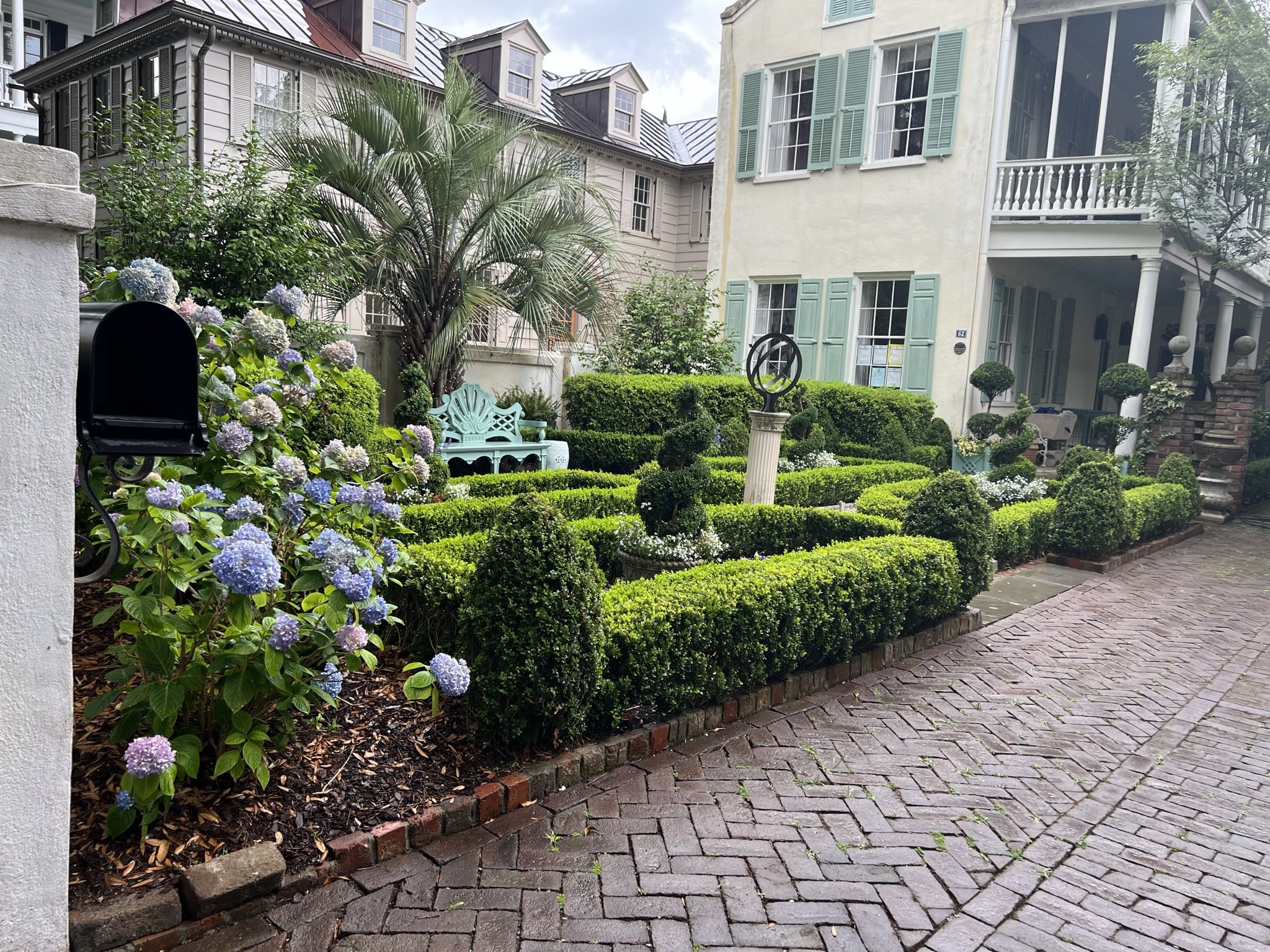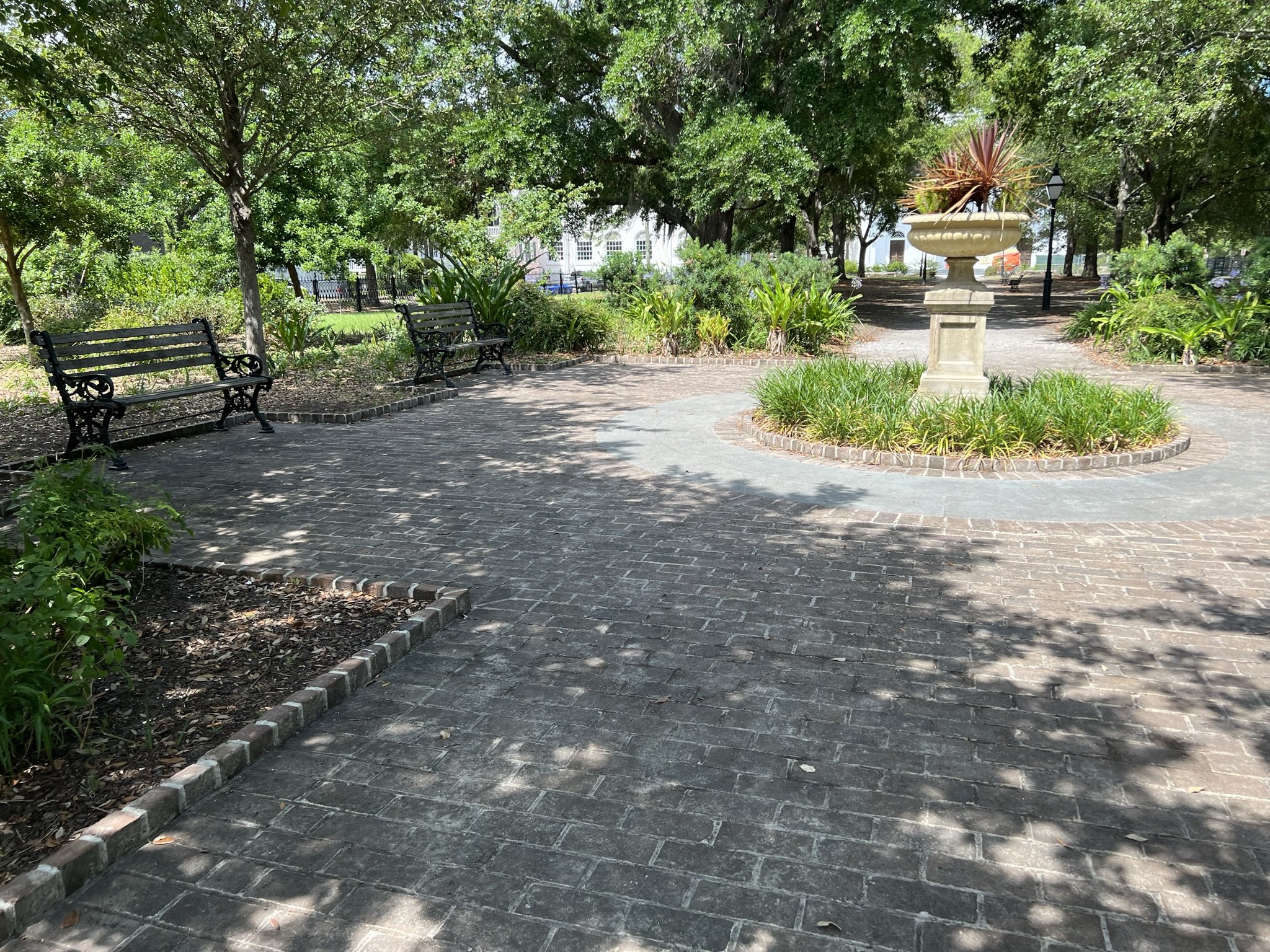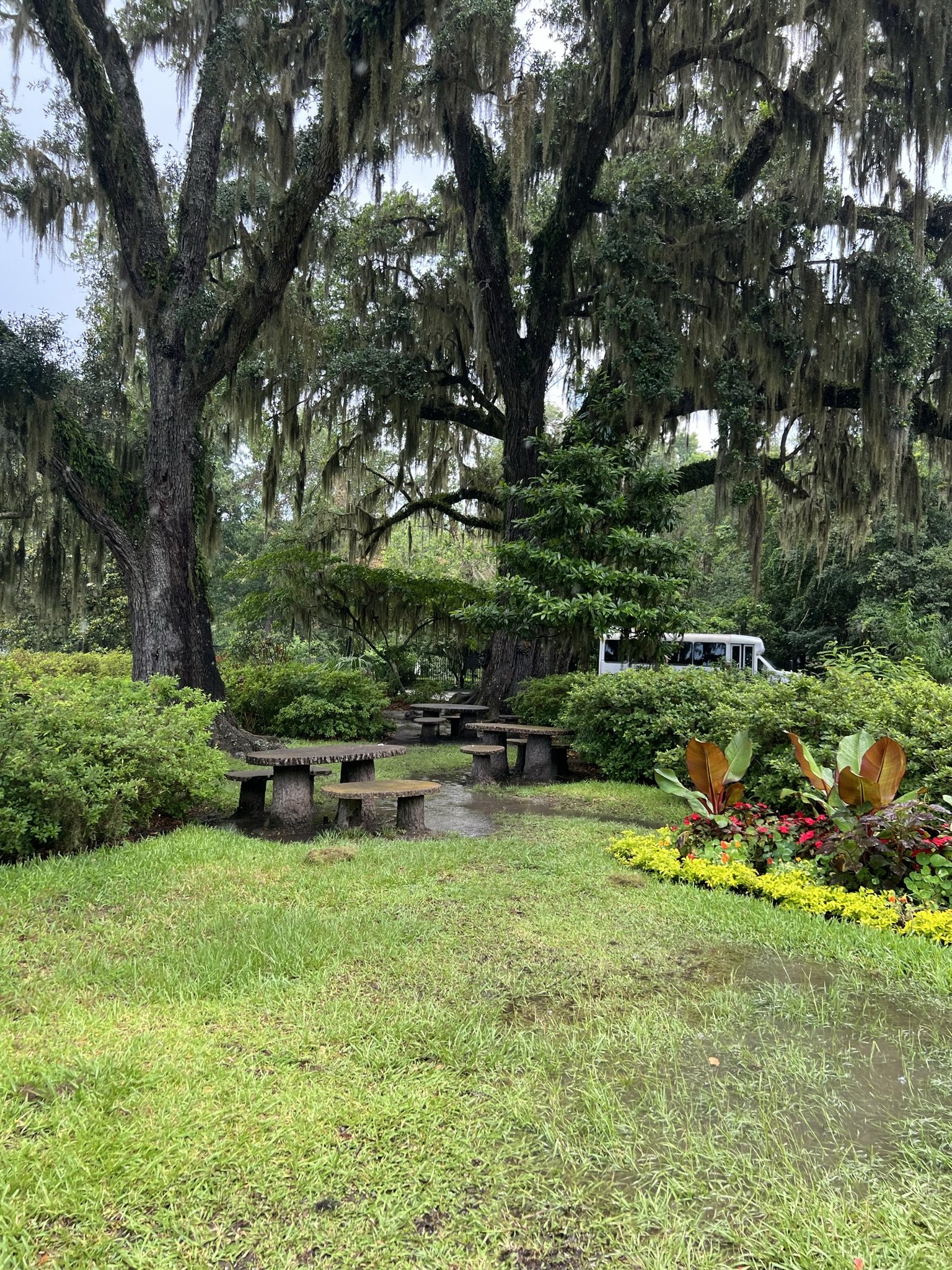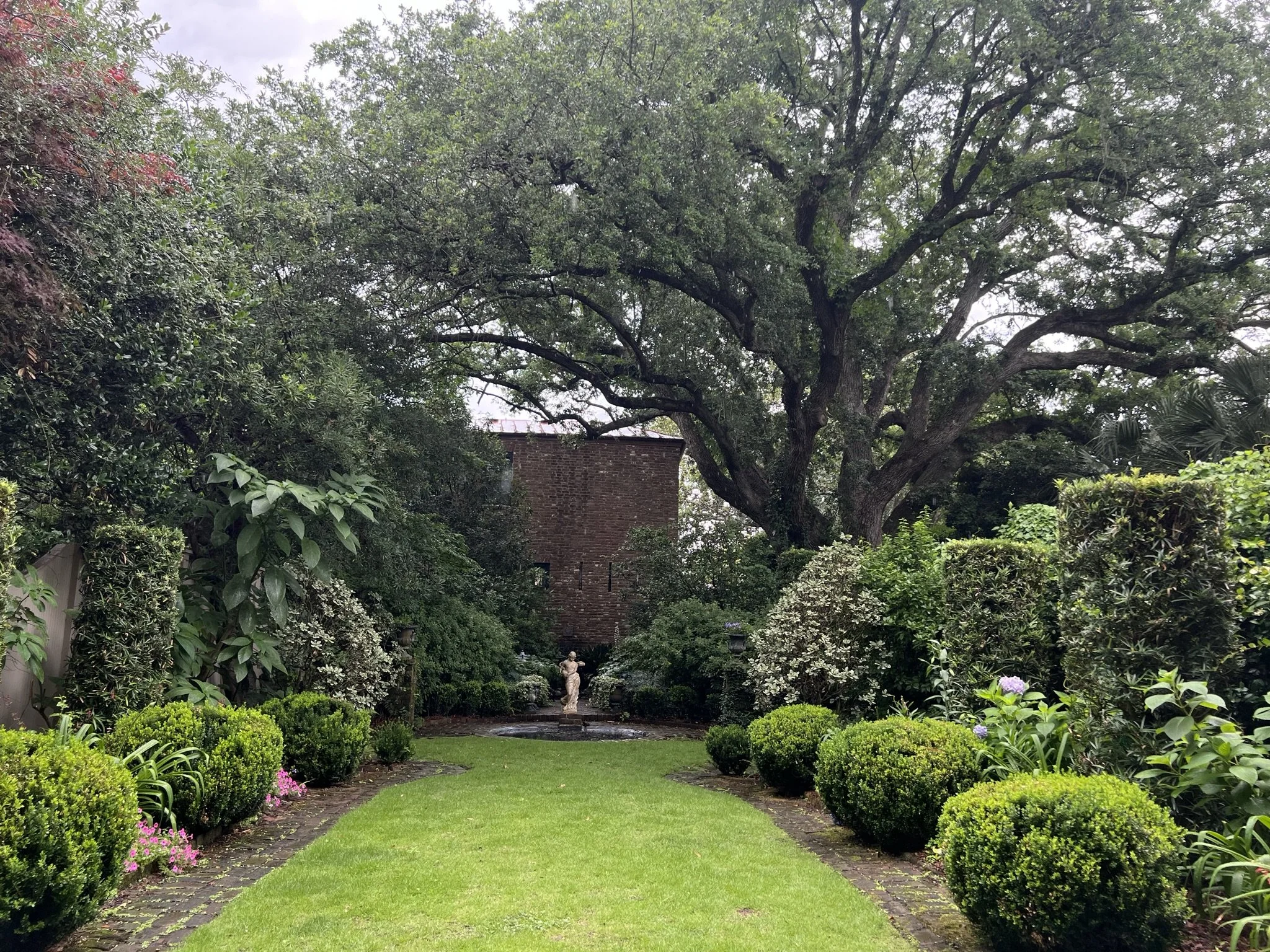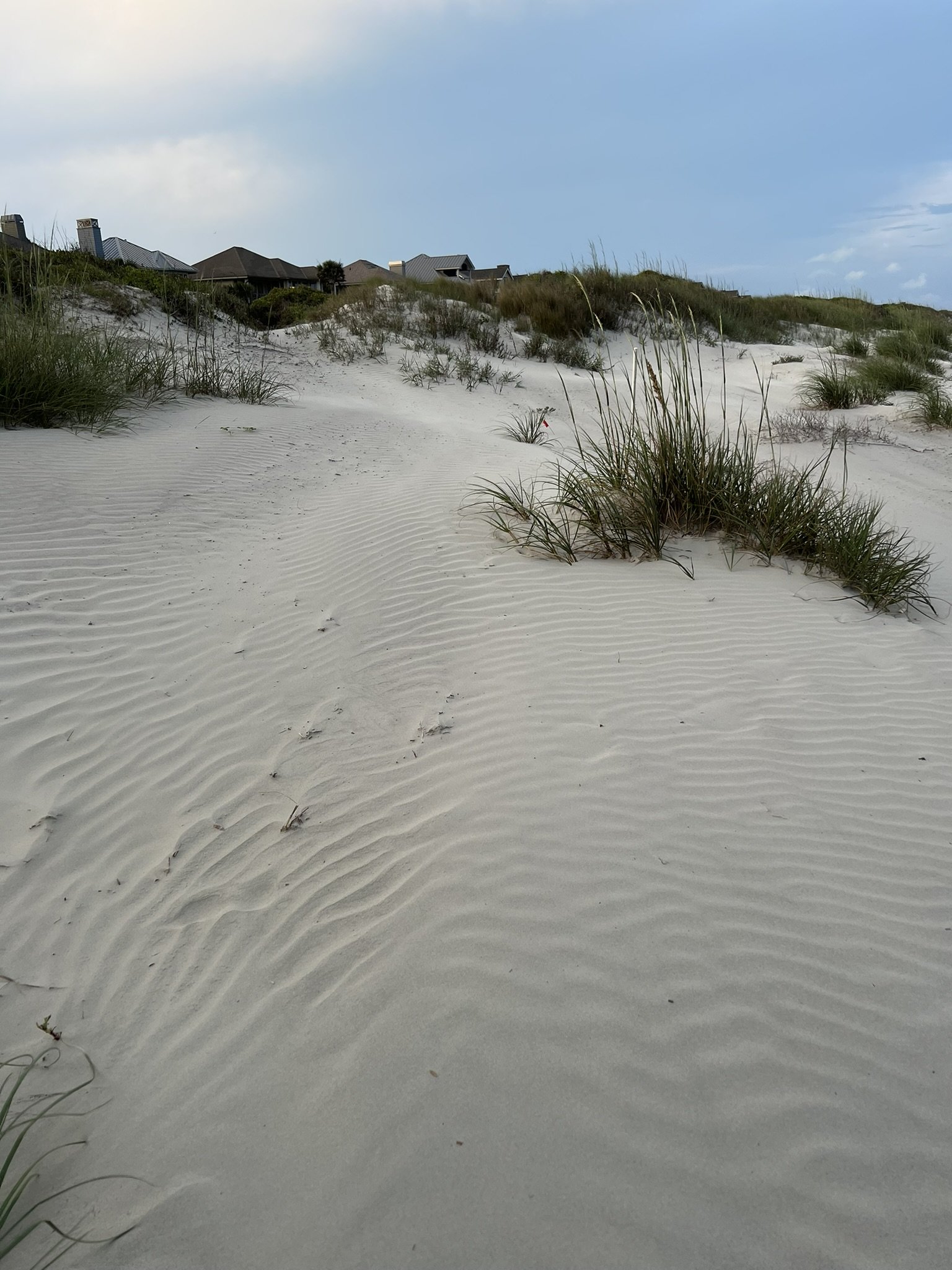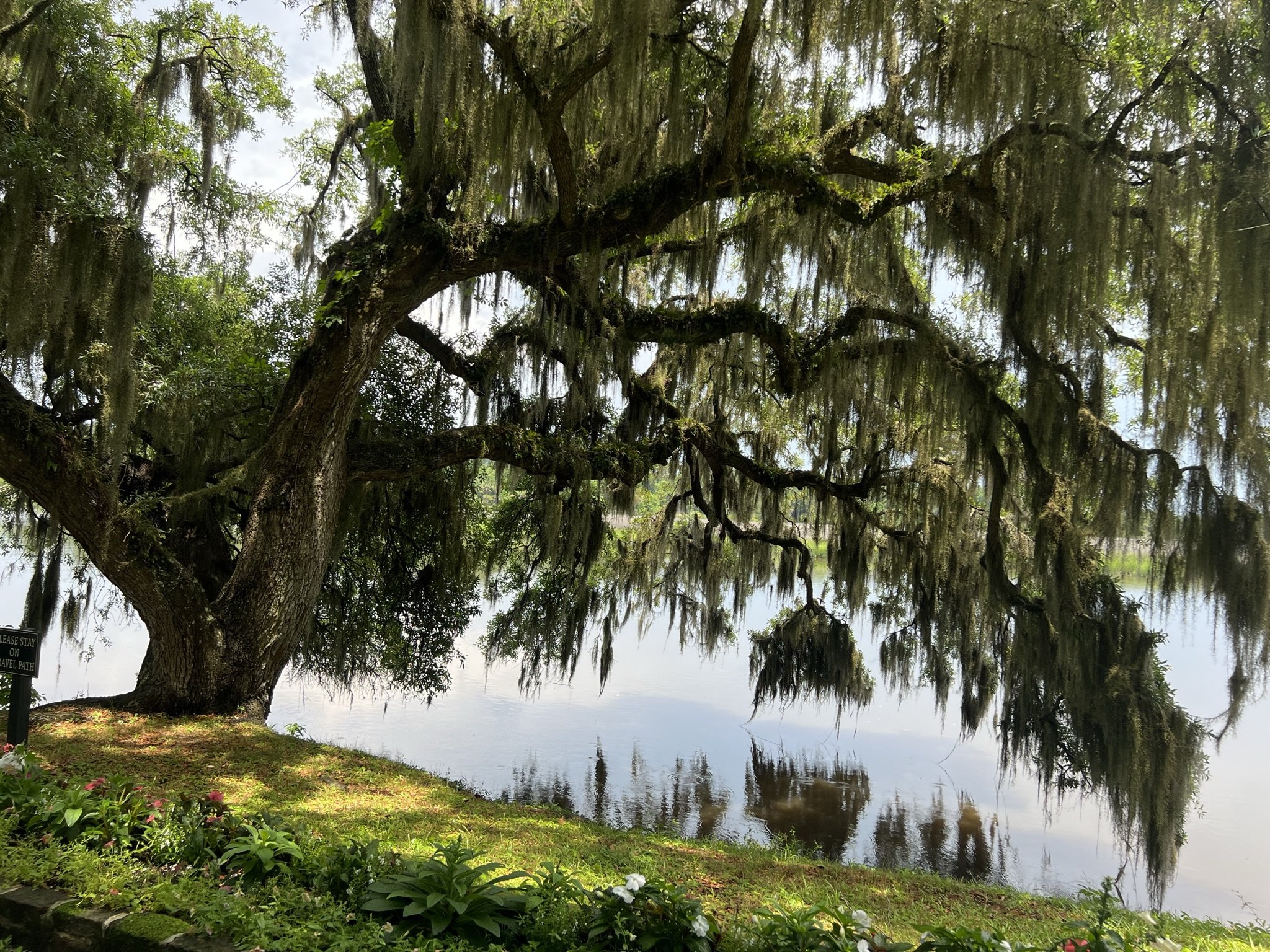Lush landscaping in Charleston.
My name is Clara, and I have been given the opportunity to be an intern for Lori Hawkins’ firm as part of finishing my degree. I am currently in my last semester of college majoring in Landscape Architecture at Utah State University. After spending the past 3.5 years in Utah, I am glad to be back in North Carolina where I grew up. Although it sounds dramatic, traveling to Charleston, SC was truly life changing because it altered the trajectory of my life. Before the trip, I was planning to stay out West because I figured the connections and experiences that I’ve gained at Utah State University would benefit me in the long run. But after long days of garden hopping and exploring the Low Country landscapes I fell back in love with the region I grew up in.
Formal garden on Charelston street with boxwoods and hydrangea.
The landscapes of Charleston and the surrounding areas embodied a sense of place unlike any I've experienced. This sense was a deep love for Low Country, southern roots which emulated an old time classy feel. The attention to detail and immaculate views were at every corner. The landscaping around the local grocery store could have been interpreted as a pocket park to a Utahn. The pure lushness of the area created a serenity that cannot be found out in the open sky West. The Low Country style was emulated in every aspect possible. The character and sense of place were prominent because of the attention to detail in the designs. Ian Kola was a friend I made at USU who now works for a firm in Charleston called Seamon Whiteside. While visiting him, he showed me how their firm used brick that intentionally looked weathered to maintain the Charleston aesthetic. They made it a priority to preserve the existing Charleston aesthetic.
Wragg Square in Charleston.
Each park I explored in Charleston could have been planned by the same person as they flowed coherently from one to the other. Each had its own individual characteristics but the similarities in Low Country style were prominent in each. Designing with the character of the place in mind is critical to the success of a park. Had a modern asymmetric park been designed in the heart of Charleston, it would have been an eyesore.
Lake view walk through Middleton Place.
Middleton Place was named a national landmark, and there is no question that it qualifies in every sense imaginable. The garden was first made in 1741 and has been expanding since. Middleton Place had various sites including, open vast lakes, acres of fresh cut grass, untouched preserved forests, and symmetrical manicured gardens. The transitions between each site were well planned, nothing too stark but still provided a sense of arrival when entering each area. One of the most notable things from Middleton Place was their parking lot design. The stalls were distinguished with large single trees rather than a painted line. Unique design details like these created a unique and incredible sense of place at Middleton.
Picnic spot in Magnolia Plantation under weeping spanish moss.
Magnolia Plantation felt a bit more touristy than Middleton. The design of the landscape felt less maintained and expressed more of a natural look. Keeping plants in their natural form encouraged visitors to feel close to nature as they explored the landscapes raw state, but in some areas, the land felt more unkempt than naturally beautiful.
Hydrangea blooms surrounding the Nathaniel Russel home.
The Nathaniel Russel home and garden was a great historic stop on the trip. The residential garden was beautiful. The lot was tiny and the house structure itself took two-thirds of the space, but the outdoor space was well utilized and created a natural oasis amongst an urban jungle.
Mrs. Whaley’s secluded garden in the heart of urban Charleston.
Mrs. Whaley's garden demonstrated the use of making the most of a tiny space as well. Mrs. Whaley and her husband hired a landscape architect to turn their 30x110ft backyard into a private garden and he did a wonderful job. The design creates an intimate experience that makes you feel escaped from the city even though it’s located in the heart of it.
Sand dunes on Kiawah’s beach.
Kiawah Island was the coastal experience of the trip. Their world renown golf courses keep the design standard of the island impeccably high. Walkability was a key aspect I noticed. Kiawah has well maintained paved paths that appear all throughout the island. Anyone who visits is expected to rent or bring a bike to get around, as the island is more pedestrian and bike friendly than vehicle oriented. The natural life on Kiawah Island was beautiful.
Gorgeous Live Oak covered in spanish moss at Magnolia Plantation.
Experiencing the South through the perspective of a landscape architect in training showed me things I didn’t notice when visiting Charleston previously. Charleston, SC imbued it’s own distinctive character, which was key to creating the sense of place that is so strong there. I will certainly use not only the examples I saw as precedents, but will also use the principles of Charleston’s landscape identity as a pattern for designing my own future projects.

